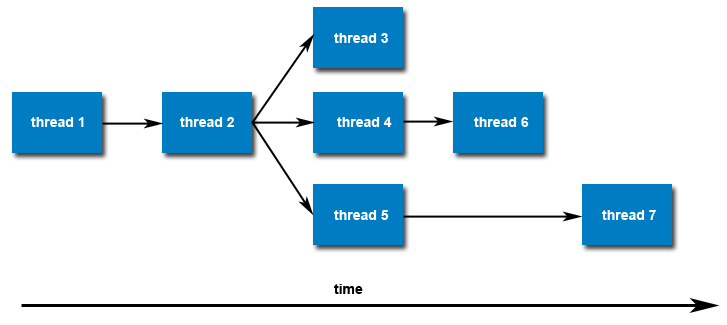====本文系本站原创,欢迎转载! 转载请注明出处:http://blog.csdn.net/yyplc====
用Posix thread进行多线程设计,就不怕跨平台了,因为很多OS都兼容Posix thread,如Linux/Windows等,甚至嵌入式系统上(如rt-thread)都支持posix thread API。线程有比进程体积小,速率高,速度快等优势。所以编程时,如果涉及到效率和速度时,采用pthread_create()一个线程总比fork()一个进程好些。
Posxi thread 线程操作主要有创建(creation),终止(termination),同步(joins,blocking),调度(scheduling),数据管理(datamanagement)和交互(interaction).
可以从以下线程框图了解线程的构架:

多线程间关系:

多线程间共享内存模型:

与普通的fork()进程不一样,线程很简单,线程并不需要维护线程列表,也不需要知道谁创建了它。以下是pthread_create()与fork()在各种平台上,性能的比较:
- The primary motivation for using Pthreads is to realize potential program performance gains.
- When compared to the cost of creating and managing a process, a thread can be created with much less operating system overhead. Managing threads requires fewer system resources than managing processes.
For example, the following table compares timingresults for the fork() subroutineand the pthread_create() subroutine.Timings reflect 50,000 process/thread creations, were performed with the time utility, and units are in seconds, nooptimization flags.
Note: don't expect the sytem and user times toadd up to real time, because these are SMP systems with multiple CPUs workingon the problem at the same time. At best, these are approximations run on localmachines, past and present.
| Platform |
fork() |
pthread_create() |
||||
| real |
user |
sys |
real |
user |
sys |
|
| Intel 2.8 GHz Xeon 5660 (12cpus/node) < |
||||||








 Posix线程提供了一种跨平台的多线程编程方式,具有创建成本低、效率高的优点。线程间共享内存,包括指令、大部分数据、文件描述符等。关键操作包括创建、终止、同步(如互斥量、条件变量)。互斥量通过锁计数管理临界资源,条件变量用于线程间的同步等待。这些机制确保了多线程的安全性和高效性。
Posix线程提供了一种跨平台的多线程编程方式,具有创建成本低、效率高的优点。线程间共享内存,包括指令、大部分数据、文件描述符等。关键操作包括创建、终止、同步(如互斥量、条件变量)。互斥量通过锁计数管理临界资源,条件变量用于线程间的同步等待。这些机制确保了多线程的安全性和高效性。
 最低0.47元/天 解锁文章
最低0.47元/天 解锁文章


















 被折叠的 条评论
为什么被折叠?
被折叠的 条评论
为什么被折叠?








